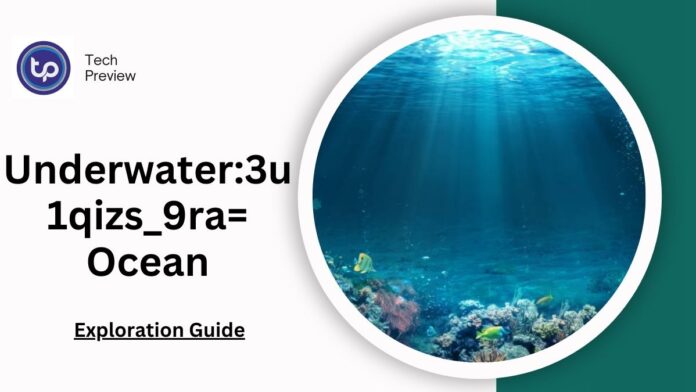The ocean is a vast and mysterious world, covering over 70% of the Earth’s surface. Despite its size, only about 20% of the ocean has been explored. One of the most captivating aspects of this underwater realm is the Underwater:3u1qizs_9ra= Ocean, a term that refers to the deep, uncharted areas filled with unique ecosystems and geological wonders.
From the vibrant coral reefs in the shallow waters to the pitch-dark trenches at extreme depths, the Underwater:3u1qizs_9ra= Ocean offers an unparalleled glimpse into the unknown.
This article will take you on a journey through the different zones of the ocean, explore the marine life inhabiting these depths, and highlight the latest advancements in ocean exploration technology.
1. Understanding the Zones of Underwater:3u1qizs_9ra= Ocean
The Underwater:3u1qizs_9ra= Ocean is divided into various zones based on depth, light penetration, and temperature. These zones host distinct types of marine life and offer unique habitats.
Zones of Underwater:3u1qizs_9ra= Ocean and Their Characteristics
| Zone | Depth Range | Key Features | Marine Life |
|---|---|---|---|
| Sunlight Zone | 0-200 meters | Warm, bright, supports photosynthesis | Coral reefs, fish, turtles |
| Twilight Zone | 200-1,000 meters | Limited light, cooler temperatures | Lanternfish, squid, jellyfish |
| Midnight Zone | 1,000-4,000 meters | No light, cold, high pressure | Bioluminescent fish, giant squids |
| Abyssal Zone | 4,000-6,000 meters | Freezing temperatures, high pressure | Deep-sea shrimp, tube worms |
| Hadal Zone | 6,000-11,000 meters | Deepest trenches, extreme conditions | Sea cucumbers, snailfish |
The diverse zones of Underwater:3u1qizs_9ra= Ocean are home to incredible species, each adapted to thrive in its specific environment.
2. Marvels of Marine Life in Underwater:3u1qizs_9ra= Ocean
The Underwater:3u1qizs_9ra= Ocean is teeming with fascinating creatures, many of which remain undiscovered. The unique conditions of the ocean’s depths have led to the evolution of extraordinary adaptations.
Remarkable Marine Species:
- Bioluminescent Fish: These deep-sea creatures produce their own light through a chemical reaction, helping them navigate and attract prey in complete darkness.
- Giant Squid: One of the largest invertebrates, giant squids can grow up to 40 feet long. They are elusive creatures, rarely seen by humans.
- Coral Polyps: Found in the sunlight zone, coral polyps form massive reefs that provide shelter and food for countless marine species.
These species highlight the incredible biodiversity of Underwater:3u1qizs_9ra= Ocean, showcasing the adaptability and resilience of marine life.
3. The Role of Underwater:3u1qizs_9ra= Ocean in Climate Regulation
The Underwater:3u1qizs_9ra= Ocean plays a crucial role in regulating the Earth’s climate. It acts as a carbon sink, absorbing about 30% of the carbon dioxide produced by human activities. The ocean’s currents also help distribute heat around the globe, stabilizing weather patterns.
Impact of Climate Change on the Ocean:
- Rising Temperatures: Warmer ocean temperatures affect marine species, leading to coral bleaching and shifting fish populations.
- Ocean Acidification: Increased CO2 levels lower the pH of the ocean, damaging the shells of marine organisms like corals and shellfish.
- Sea Level Rise: Melting ice caps contribute to rising sea levels, threatening coastal habitats and communities.
Understanding the impact of human activities on Underwater:3u1qizs_9ra= Ocean is vital for implementing effective conservation strategies.
4. Technological Advancements in Exploring Underwater:3u1qizs_9ra= Ocean
Exploring the depths of Underwater:3u1qizs_9ra= Ocean has long been a challenge due to its extreme conditions. However, recent technological innovations have revolutionized our ability to study this mysterious realm.
Key Technologies Used:
- Remotely Operated Vehicles (ROVs): These unmanned submersibles are equipped with cameras and sensors, allowing scientists to explore deep-sea habitats and collect samples without the need for human divers.
- Autonomous Underwater Vehicles (AUVs): AUVs are capable of independently navigating the ocean’s depths, gathering data on temperature, salinity, and marine life.
- Sonar Mapping: Sonar technology helps create detailed maps of the ocean floor, revealing underwater features like mountains, valleys, and trenches.
These advancements have significantly enhanced our understanding of Underwater:3u1qizs_9ra= Ocean, shedding light on its complex ecosystems.
5. Conservation Efforts for Underwater:3u1qizs_9ra= Ocean
The health of Underwater:3u1qizs_9ra= Ocean is threatened by human activities such as pollution, overfishing, and habitat destruction. To protect this vital ecosystem, various conservation measures are being implemented.
Important Conservation Strategies:
- Marine Protected Areas (MPAs): These designated zones limit human activities to preserve marine biodiversity.
- Sustainable Fishing Practices: Promoting responsible fishing methods helps prevent overfishing and allows fish populations to recover.
- Pollution Control: Reducing plastic waste and improving waste management practices are essential steps in protecting marine life.
Supporting these conservation efforts is crucial for safeguarding the future of Underwater:3u1qizs_9ra= Ocean and its unique inhabitants.
Conclusion
The Underwater:3u1qizs_9ra= Ocean is a vast and mysterious world filled with diverse ecosystems and fascinating marine life. From the vibrant coral reefs in the sunlight zone to the dark, unexplored trenches of the hadal zone, this underwater realm offers endless opportunities for discovery.
As technology advances and conservation efforts grow, our understanding of the ocean continues to expand, revealing the intricate beauty and complexity of Underwater:3u1qizs_9ra= Ocean.
By exploring and protecting this incredible environment, we can ensure that future generations will be able to appreciate the wonders of the ocean and its vital role in our planet’s health.
FAQs
1. What is Underwater:3u1qizs_9ra= Ocean?
It refers to the deep, uncharted areas of the ocean known for their unique ecosystems and geological features.
2. How does the ocean help regulate the climate?
The ocean absorbs carbon dioxide and distributes heat through its currents, helping to stabilize the Earth’s climate.
3. What technology is used in ocean exploration?
ROVs, AUVs, and sonar mapping are key tools for exploring the depths of Underwater:3u1qizs_9ra= Ocean.
4. Why is conservation important for the ocean?
Conservation helps protect marine biodiversity, maintain healthy ecosystems, and ensure the sustainability of ocean resources.
5. What are the biggest threats to Underwater:3u1qizs_9ra= Ocean?
Pollution, overfishing, and climate change are major threats to the health of this vital ecosystem.
Click here to know more.








